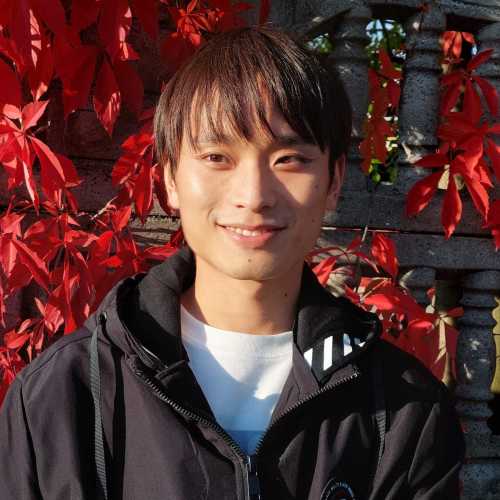Table Of Contents
- Historical Landmarks That Define Osaka
- Modern Architectural Marvels
- Street Food Culture That Defines Osaka
- Parks and Natural Escapes
- Shopping Experiences Beyond Department Stores
- Cultural Immersion Experiences
- Unique Osaka Attractions
- Entertainment and Nightlife
- Day Trip Opportunities from Osaka
- Living The Local Way in Osaka
- Seasonal Experiences in Osaka
- True-to-life and Local Favorites
- Planning Your Osaka Experience
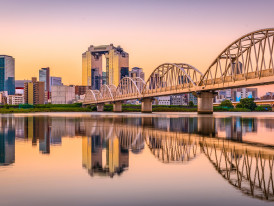
Sunrise over Osaka cityscape with traditional buildings in foreground and modern skyline in background
Born and raised in Osaka, Naomi blends local love with practical know-how. Whether she’s recommending a sizzling okonomiyaki spot or a peaceful side street, her tone is always warm and trustworthy.
Growing up in Osaka has given me countless memories of wandering through bustling shopping streets, discovering unexplored corners tucked between modern skyscrapers, and savoring the incredible street food that makes this vibrant city famous worldwide.
After three decades of calling Osaka home, I've learned that the best "must-sees" in Osaka aren't always the ones featured in glossy travel magazines.
They're found in the quiet corners of ancient temples, the laughter echoing from local izakayas, and the genuine warmth of neighbors sharing their favorite takoyaki spot.
Osaka pulses with an energy that's uniquely Japanese yet distinctly its own. From the towering presence of Osaka Castle to the neon-lit alleys of Dotonbori, this incredible city offers layers of experiences that reveal themselves slowly to those willing to look beyond the surface.

Edo-era street reconstruction with traditional wooden buildings Photo by MChe Lee on Unsplash
Historical Landmarks That Define Osaka
Osaka Castle: The Heart of Japan's Kitchen
Standing before Osaka Castle never fails to remind me of the rich Japanese history that flows through every stone of this city. The castle, rebuilt after World War II, rises majestically, its white walls and green-tiled roofs creating a striking contrast against the modern buildings surrounding it.
I remember bringing my grandmother here when I was eight, listening to her stories about how life was before the war.
The Osaka Castle's eight-story main tower houses a museum that chronicles Osaka's transformation from a merchant hub to the bustling metropolis it is today.
From the top floor's observation deck, the panoramic view stretches across central Osaka, showing how seamlessly historical and contemporary elements blend throughout the urban landscape.
Osaka Castle Park: Gardens and Seasonal Beauty
The surrounding park areas provide a welcome respite from urban life. The park's plum grove blooms earlier than the cherry trees, offering a preview of spring's arrival.
During summer festivals, the park's open areas host traditional performances and food stalls that attract locals and visitors alike.
The Sacred Grounds of Ji Temple
Nestled in a quieter district away from the tourist crowds, this temple holds a special place in my heart. Every New Year, I join the steady stream of locals who come to pray for good fortune and health.
The temple's wooden structures, weathered by decades of Osaka's humid summers and mild winters, emanate a peaceful energy that seems to slow time itself.
During cherry blossom season, the temple grounds transform into a pink wonderland, though it remains refreshingly uncrowded compared to more famous viewing spots.
Temple Festivals and Traditional Celebrations
Throughout the year, ji temple hosts intimate festivals that showcase traditional Japanese culture in true-to-history settings.
These celebrations feature traditional music, dance performances, and seasonal food offerings attended primarily by local families.
Osaka's Rich History at the Museum of Housing and Living
This indoor reconstruction of Edo-era Osaka transports visitors back to the city's merchant origins. Walking through the life-sized replica streets, complete with traditional shops and residential buildings,
I'm always struck by how compact yet functional the living spaces were.
The museum effectively bridges the gap between Osaka's past and present, helping visitors understand how the city's merchant culture evolved into today's food-focused identity.
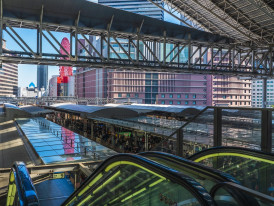
Osaka Station's main concourse during morning rush hour with streams of commuters. Image by
Modern Architectural Marvels
Umeda Sky Building: Touching the Clouds
The Umeda Sky Building's distinctive architecture never fails to capture my imagination. Two towers connected by a "floating" observatory create an engineering marvel that's become synonymous with modern Osaka.
The building's escalators, suspended in mid-air as they carry visitors to the observation deck, offer thrilling views of the city spreading out below.
From the observation deck, particularly during sunset, Osaka transforms into a glittering tapestry of lights.
The contrast between the ultra-modern architecture above and the nostalgic underground shopping area below perfectly encapsulates Osaka's ability to honor its past while embracing the future.
The Underground Shopping Experience
Beneath the Umeda Sky Building, the underground shopping complex extends for blocks, connecting multiple buildings and train stations.
This subterranean world includes restaurants, shops, and entertainment venues, creating a complete urban environment protected from the weather.
Universal Studios Japan: Where Fantasy Meets Reality
Universal Studios Japan has evolved far beyond its original movie-themed attractions to become a pop culture phenomenon. The Wizarding World of Harry Potter section never fails to amaze me with its attention to detail.
Walking through Hogsmeade village, complete with snow-covered rooftops and the imposing Hogwarts castle, feels like stepping directly into the films.
The park's Jurassic Park area creates an immersive prehistoric experience, while the newer attractions celebrate Japanese pop culture icons.
Seasonal Events and Limited-Time Attractions
Universal Studios Japan regularly features seasonal events that transform the park's atmosphere. Halloween celebrations bring elaborate decorations and special shows, while Christmas illuminations create magical winter wonderlands.
Osaka Station City: A Destination in Itself
This spot has transformed into much more than a transportation hub. The complex houses everything from high-end department stores to casual dining options.
Grand Front Osaka, directly connected to the station, represents the pinnacle of contemporary Japanese retail and dining culture.
Looking for a private city experience in Osaka?
Explore the city with a local who plans a private day just for you; no groups, no scripts.
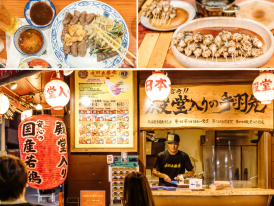
Tsuruhashi shopping street with Korean and Japanese signage, vendors selling kimchi.
Street Food Culture That Defines Osaka
Food Tour: Discovering Osaka's Culinary Heart
Organized food tours through Osaka's diverse neighborhoods reveal layers of culinary culture that individual restaurant visits cannot capture. These guided experiences typically begin in traditional markets, progress through street food districts, and conclude in local neighborhoods where residents gather for delicious dining experiences.
The best food tours include cultural context, explaining how specific dishes reflect Osaka's history as a merchant city where efficient, delicious food became essential to daily life.
Kuromon Market: Where Locals Shop and Eat
Kuromon Market, known locally as "Osaka's Kitchen," remains one of my favorite places to experience the best street food culture.
Unlike tourist-focused markets, Kuromon serves as a genuine neighborhood market where locals shop for daily groceries while enjoying fresh street food from vendors who've perfected their recipes over generations.
The market's narrow aisles buzz with activity from early morning until late afternoon. Vendors call out their specialties in Osaka dialect, creating a soundscape that's uniquely local.
Traditional Market Culture and Modern Adaptations
The market maintains traditional Japanese market culture while adapting to contemporary needs.
Vendors who have worked the same stalls for decades know their regular customers' preferences, creating personal relationships that extend beyond simple transactions.
Dotonbori: Neon-Lit Food Paradise
Dotonbori's neon lights reflect off the canal's dark water, creating a kaleidoscope of colors that epitomizes Osaka's vibrant nightlife.
This area represents the heart of Osaka's street food culture, where massive mechanical signs advertise everything from takoyaki to okonomiyaki.
Walking along the canal-side promenade, the aroma of grilling octopus and savory pancakes fills the air. Street food stalls line the narrow alleys branching off the main street, each specializing in particular dishes that have been perfected over decades.
Sonezaki's Hidden Izakaya Culture
Sonezaki offers a more intimate glimpse into Osaka's food culture, away from the tourist crowds of Dotonbori.
Near Tsuyuten Jinja Shrine and along Ohatsutenjin Urasando, narrow alleys hide countless izakayas where locals gather after work.
These small establishments serve as neighborhood social centers where conversations flow as freely as the sake.
The outside seating areas come alive during warmer months. Here, salarymen unwind with beer and yakitori while sharing stories of their day.
Tsuruhashi: Koreatown's Culinary Treasures
Tsuruhashi, Osaka's Koreatown, offers a fascinating blend of Japanese and Korean cultures that reflects the city's international character.
The main shopping street buzzes with vendors selling Korean fashion, beauty products, and traditional ingredients alongside Japanese goods.
Street food here takes on Korean flavors, with vendors selling crispy Korean pancakes, spicy kimchi, and savory japchae noodles.
The shopping arcade connects dozens of small restaurants and shops, creating a covered market atmosphere where the aromas of grilling meat and fermented vegetables blend into an intoxicating mixture.
Cultural Fusion and Community Identity
Tsuruhashi demonstrates how immigrant communities maintain their cultural identity while integrating into Japanese society.
Korean families who have lived in Osaka for generations continue traditional food preparation methods while adapting to Japanese ingredients and customer preferences.
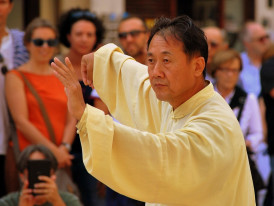
Small neighborhood park with elderly residents practicing tai chi under morning light. Image by Gianni Crestani from Pixabay
Parks and Natural Escapes
Utsubo Park: Urban Green Space Sanctuary
Utsubo Park provides a peaceful escape from central Osaka's intensity without requiring a long journey. This urban green space offers perfectly manicured lawns where families picnic and children play. The park's rose garden blooms spectacularly in late spring, attracting photographers and couples seeking romantic backdrops.
I often bring a book here on weekends, settling under one of the mature trees that provide shade during hot summer afternoons.
The nearby cafes serve excellent coffee and light meals, making it easy to spend entire afternoons alternating between reading in the park and enjoying refreshments.
Kema Sakuranomiya Park: Cherry Blossom Paradise
Once cherry blossoms start to show, Kema Sakuranomiya Park transforms into one of Osaka's most magical locations.
The park stretches along the Okawa River, creating a pink tunnel of cherry blossoms that seems to extend infinitely in both directions.
I've enjoyed walking this path during hanami season for over twenty years, and the sight of thousands of cherry blossoms reflected in the river water never loses its impact.
River Activities and Water Sports
Beyond cherry blossom season, the Okawa River supports various water activities, including pleasure boating and fishing.
Local clubs organize rowing competitions and dragon boat races that add excitement to the usually peaceful waterway.
Peaceful Gardens and Hidden Green Spaces
Smaller parks and gardens are scattered throughout Osaka that provide quiet retreats from urban intensity.
These hidden green spaces, often surrounding temples or tucked between residential buildings, offer intimate experiences of nature within the city.
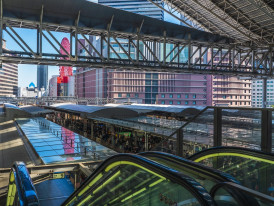
Namba Station area with multiple levels of shopping from underground to street level. Image by
Shopping Experiences Beyond Department Stores
Orange Street: Youth Culture and Fashion
Orange Street represents Osaka's contemporary youth culture, lined with independent boutiques, vintage shops, and trendy cafes that cater to fashion-forward locals.
I love browsing the vintage clothing stores here, where carefully curated selections mix Japanese and international fashion from different eras.
The street's cafes serve as informal gathering places for young creatives, from art students to indie musicians. Street art and creative signage add visual interest to the already eclectic mix of shops and restaurants.
Covered Shopping Arcades: Traditional Commerce
Osaka's covered shopping arcades represent a traditional form of Japanese retail culture that has adapted to modern needs while maintaining its essential character.
These covered walkways protect shoppers from the weather while creating intimate commercial environments where shop owners and regular customers develop lasting relationships.
I particularly enjoy the small specialty food shops that sell regional products and traditional sweets prepared using centuries-old techniques.
Namba: Shopping and Entertainment Hub
Namba serves as one of Osaka's primary shopping and entertainment districts, centered around Namba Station, and has excellent connections to other parts of the city.
The area's department stores, underground shopping complexes, and street-level shops create a comprehensive retail environment that caters to every possible need and budget.
What if your day in Osaka was planned by someone who knows it — and you?
City Unscripted matches you with a local host who creates a private experience based on your interests, not a set route.
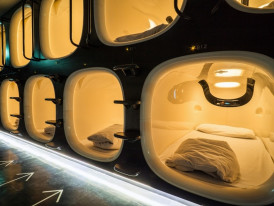
Modern capsule hotel interior showing individual sleeping pods with built-in entertainment systems.
Cultural Immersion Experiences
Cooking Classes: Learning Osaka's Culinary Secrets
Participating in cooking classes has deepened my appreciation for Osaka's food culture in ways that simply eating restaurant meals cannot achieve.
Local cooking schools offer hands-on experiences where participants learn to prepare iconic Osaka dishes like takoyaki and okonomiyaki from scratch.
The cooking process reveals the techniques and attention to detail that make Osaka's street food so exceptional.
Learning to flip takoyaki balls in their special pans requires patience and practice, skills that local chefs have developed over years of daily repetition.
Tea Ceremony: Quiet Moments of Japanese Culture
Attending traditional tea ceremonies in Osaka provides insight into the meditative aspects of native culture that balance the city's energetic pace.
Several temples and cultural centers offer tea ceremony experiences that focus on mindfulness and appreciation of simple beauty.
The tea rooms, often overlooking small gardens, provide perfect settings for experiencing the ceremony's peaceful atmosphere.
Capsule Hotels: Experiencing Modern Japanese Innovation
Staying in Osaka's capsule hotels provides insight into Japanese innovation in compact living spaces. These facilities have evolved into cultural experiences that showcase Japanese efficiency and design philosophy.
Each capsule contains everything necessary for a comfortable night's stay within a space roughly the size of a single bed.

Namba Yasaka Shrine's distinctive lion head stage with traditional architecture against backdrop of modern buildings.
Unique Osaka Attractions
Osaka Aquarium: Marine Life Spectacle
Osaka Aquarium Kaiyukan ranks among the world's most impressive aquariums, housing an incredible variety of marine life in exhibits that recreate different ocean environments.
The aquarium's centerpiece, a massive tank containing whale sharks, creates an awe-inspiring experience that never fails to captivate visitors of all ages.
The aquarium's design follows a spiral path that gradually descends through different ocean levels, allowing visitors to observe the same exhibits from multiple perspectives.
Tsutenkaku Tower: Nostalgic Osaka Landmark
Tsutenkaku tower, rising above the Shinsekai district, embodies Osaka's nostalgic charm while serving as a beloved local landmark.
The tower's observation deck provides panoramic views of the city, though the real attraction lies in its role as the heart of Shinsekai's retro entertainment district.
The area surrounding the tower maintains an honest Showa-era atmosphere with its vintage game arcades, traditional kushikatsu restaurants, and small bars that have remained unchanged for decades.
Namba Yasaka Shrine: Where Tradition Meets Urban Life
Namba Yasaka Shrine provides a striking example of how traditional Japanese spirituality adapts to urban environments.
The shrine's famous lion head stage, used for traditional performances, creates a dramatic focal point that contrasts with the surrounding modern buildings.
Regular visitors include local business owners who stop by for brief prayers before opening their shops, demonstrating how traditional practices remain integrated into contemporary daily life.

View from Ferris wheel showing harbor area and artificial islands extending into bay. Photo by Tsuyoshi Kozu on Unsplash
Entertainment and Nightlife
Ferris Wheel Views and Bay Area Attractions
The giant Ferris wheel at Tempozan Harbor Village offers spectacular views of Osaka Bay and the city's waterfront development.
Rising slowly above the harbor, the wheel provides a unique perspective on how Osaka extends into the bay through artificial islands and modern port facilities.
Osaka Bay area attractions extend beyond the Ferris wheel to include shopping centers, restaurants, and entertainment facilities that create a complete recreational district.
Shinsekai: Retro Entertainment District
Shinsekai district preserves the atmosphere of mid-20th-century Osaka through its vintage game arcades, traditional kushikatsu restaurants, and nostalgic architecture.
Walking through the narrow streets feels like time travel, with neon signs advertising games and foods that have remained popular for decades.
The area's kushikatsu restaurants serve deep-fried skewers, following traditional recipes passed down through generations of local families.
The communal sauce bowls, shared among all customers, represent the trust and community spirit that characterizes Osaka's social culture.
Tip
We match you with the right host, not just any guide.Want to experience the real Osaka with someone who lives there?
A fully private experience, planned and led by a local host who tailors the day to you
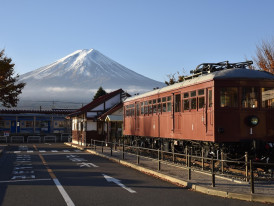
Train departing Osaka Station with Mount Fuji visible in distance, representing day trip possibilities. Image by Frank Chang from Pixabay
Day Trip Opportunities from Osaka
Planning Day Trips from Central Osaka
When planning day trips from Osaka, the city's excellent transportation connections make it easy to explore nearby destinations that complement the urban experience.
The train networks radiating from major stations like Osaka Station and Namba Station provide access to historical sites, natural areas, and cultural attractions within easy reach of the city center.
Cultural Day Trips to Historic Areas
For those interested in exploring traditional Japanese culture and architecture, tours from osaka to kyoto offer convenient ways to experience the ancient capital's temples, gardens, and preserved historical districts.
These day trips allow visitors to contrast Osaka's modern merchant culture with Kyoto's traditional imperial heritage, providing a comprehensive understanding of the Kansai region's diverse character.
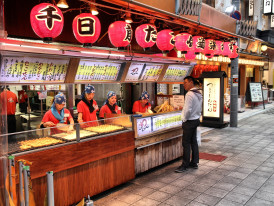
Family-run neighborhood restaurant with regular customers greeting owner by name.
Living The Local Way in Osaka
Daily Rhythms and Neighborhood Life
Understanding Osaka requires experiencing its daily rhythms beyond tourist attractions. Local life centers around neighborhood train stations, where commuters begin and end their days while small businesses cater to their daily needs.
These station areas provide insight into how ordinary residents navigate their urban environment.
Home-grown Local Dining Experiences
The local cuisine extends far beyond famous street foods to include neighborhood restaurants where regular customers are greeted by name and served their usual orders without being asked.
These establishments, often family-run for multiple generations, represent the personal relationships that maintain community connections despite the city's size and pace.
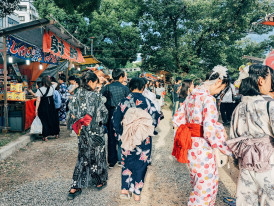
Summer festival in local neighborhood with traditional performances and food stalls.Photo by note thanun on Unsplash
Seasonal Experiences in Osaka
Spring: Cherry Blossoms and Renewal
Cherry blossom season transforms the city's parks and riverside areas into spectacular pink landscapes that draw families and friends for traditional hanami celebrations.
The communal aspect of these gatherings demonstrates the social customs that strengthen community bonds.
Summer: Festivals and Community Celebrations
Summer brings festivals that activate public spaces throughout the city, from neighborhood shrines to major parks.
These matsuri feature traditional performances, street food stalls, and carnival games that create temporary communities centered around shared cultural experiences.
Autumn: Natural Beauty and Cultural Reflection
Autumn colors paint Osaka's parks and temple grounds in brilliant reds and golds, creating natural art installations that change daily as leaves fall and seasons transition. The season's moderate temperatures provide perfect conditions for outdoor activities and sightseeing.
Ready to plan your perfect day in Osaka?
Start your experience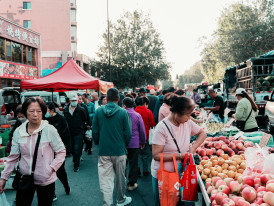
Local residential market with vendors explaining seasonal vegetables to regular customers. Photo by 金枫 郭 on pexels
True-to-life and Local Favorites
Neighborhood Temples and Quiet Spaces
Beyond famous attractions lie countless off-the-beaten-path spots that locals cherish for their lively and unique character.
Small temples tucked between modern buildings offer quiet spaces for contemplation without the crowds that gather at major religious sites.
Local Coffee Culture and Community Spaces
Neighborhood coffee shops provide gathering places for residents who value personal relationships over corporate efficiency.
These establishments serve as informal community centers where regular customers catch up on local news while enjoying carefully prepared coffee and homemade pastries.
Residential Markets and Daily Life
Local markets that serve residential neighborhoods offer raw glimpses into daily life, where vendors know their customers' preferences and seasonal specialties reflect traditional eating patterns.
These markets maintain the personal connections between producers and consumers that have been essential to Japanese food culture for centuries.
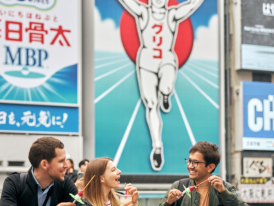
Local residents and visitors sharing street food in Dotonbori, representing cultural exchange.
Planning Your Osaka Experience
Osaka rewards visitors who approach it with curiosity and openness to unexpected discoveries. The city's compact size and efficient transportation system make it possible to experience both iconic landmarks and hidden local treasures within the same day.
The key lies in balancing structured sightseeing with spontaneous exploration that allows for genuine encounters with local culture.
The best Osaka experiences often emerge from following your senses: the aroma of grilling food leading to a hidden restaurant, the sound of laughter drawing you into a lively izakaya, or the peaceful atmosphere of a small shrine providing a moment of calm in your busy day.
This incredible city reveals its secrets gradually to those willing to wander beyond the beaten path and engage with its everyday rhythms.
Whether you're drawn by historical landmarks, cutting-edge entertainment, exceptional food culture, or simply the vibrant energy of urban Japanese life, Osaka offers experiences that will create lasting memories and a deeper understanding of contemporary Japan.
The city's greatest gift is its people's genuine enthusiasm for sharing their culture with visitors who approach it with respect and genuine interest.
What if your day in Osaka was planned by someone who knows it — and you?
City Unscripted matches you with a local host who creates a private experience based on your interests, not a set route.
Want to experience the real Osaka with someone who lives there?
A fully private experience, planned and led by a local host who tailors the day to you









